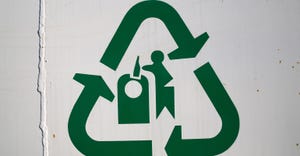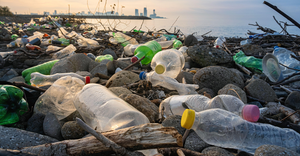L.A. seeks to increase diversion by recycling cartons. Los Angeles officials have set goals of reaching a 70 percent landfill diversion by 2013 and a 90 percent diversion rate by 2025.
When it comes to recycling, Los Angeles is not content to rest on its laurels. In June, the city expanded its residential curbside recycling program to include cartons, i.e., the paper-based food and beverage containers that hold such products as milk, juice, wine and chicken broth.
The expansion is part of Los Angeles’ attempt to divert 70 percent of its solid waste from landfills by 2013. The city’s solid waste diversion rate currently is 65 percent, according to its Bureau of Sanitation.
“Los Angeles continues striving toward being the greenest city in the nation,” said Mayor Antonio Villaraigosa in a press release issued by the Vernon Hills, Ill.-based Carton Council, a group of carton manufacturers that advised Los Angeles on the recycling program expansion. “That is why the city of Los Angeles has partnered with the Carton Council to make sure that liquid food and beverage cartons are not left to the landfills but are recycled in the most responsible and efficient way possible. Successful collaborations, initiatives and public-private partnerships have made Los Angeles a national leader in environmental stewardship and this program is another step in the right direction.”
Chaz Miller, state programs director for the Washington-based Environmental Industry Associations, says community interest in carton recycling is growing, and statistics say Miller is right. Eighteen percent of U.S. households had access to carton recycling in 2008, according to the Carton Council; in 2011, 34 percent do. The council has set a goal of increasing the percentage of households with access to 60 percent by 2015.
“We are committed to working with other cities to take this important step to expand their recycling programs,” said Jeff Fielkow, vice president of recycling for the council, in a statement.
“I think you’re going to see more and more communities [provide carton recycling like Los Angeles],” Miller adds.
Los Angeles joins approximately 200 other California cities and towns in providing carton recycling, says the Carton Council. According to the council’s website, other major cities that offer carton recycling include Philadelphia, Pittsburgh, New York, San Francisco and St. Louis.
On its website, the Los Angeles Bureau of Sanitation estimates that the program expansion will divert approximately 430 tons of cartons each year from landfills.
The inclusion of cartons in the city’s residential recycling program comes as the city is in the process of crafting what it calls a “solid waste integrated resources plan,” which Los Angeles officials say will map out the city’s path to achieving “zero waste” by 2030. The city also has a goal of a 90 percent landfill diversion rate by 2025.
The crafting of the solid waste plan began in 2007, and Los Angeles officials have said that the zero-waste plan will take six years to complete, a span that has and will include chances for the public to review the plan and provide feedback. According to a city website, an environmental impact report on the plan will be released this fall for public review and comment.
“Our city has a long-term goal of achieving zero waste, so we want to create and take advantage of all the opportunities available to recycle more items such as cartons, and to continue to increase the number of recyclable materials that can be saved from landfilling,” said Enrique C. Zaldivar, director of the Los Angeles Bureau of Sanitation, in a press release about the city adding carton recycling. “With our partnership with the Carton Council, we have been able to work with the city’s material recovery facility contractors to make the recycling of cartons a reality and a benefit.”
Los Angeles’ environmental efforts haven’t gone unnoticed. A recent study conducted by the Economist Intelligence Unit and commissioned by Siemens examined 27 major U.S. and Canadian cities’ policies and environmental records in the following nine categories: air quality, buildings, carbon dioxide emissions, energy, environmental governance, land use, transport, water and waste. Los Angeles ranked seventh in the resulting overall Green City Index (San Francisco came in first).
Los Angeles also came in third in the waste category, behind San Francisco and Seattle, and ahead of Toronto and Minneapolis.
About the Author(s)
You May Also Like




